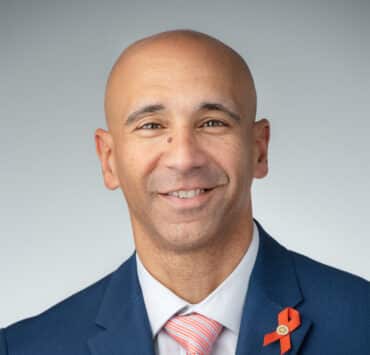|
Getting your Trinity Audio player ready...
|
When Justin Fallon Dollard joined the University of Rochester in 2019 as senior director to the office of planning, design, and construction, he noticed staff fit into two different silos.
“They were either assigned to the academic side of campus or to the healthcare side,” says Dollard, who currently serves as executive director and whose office serves the University of Rochester (UR), UR Medical Center, Strong Memorial Hospital, and UR Medicine and affiliate hospitals. “You had directors and project management staff that only did one side of the house or the other. Their services were really narrow and specialized, and folks were disconnected from the larger organization.”
That structure posed even greater problems when the COVID-19 pandemic hit. As the state of New York deprioritized certain projects to navigate the crisis, the department faced a significant period of furloughs and layoffs. Leaders couldn’t justify hanging onto staff whose projects had been indefinitely paused. At the time, Dollard argued that it was an opportunity to expand the staff’s knowledge base instead of letting them go, but university leadership had tough decisions to make.
“When you have an excited and motivated staff, it’s easier for us to maintain the same level of service excellence.”
Justin Fallon Dollard
Coming out of that challenging period, Dollard knew things needed to change, not only for the sake of his department and staff, but for the university as a whole.
“The first thing I did was rearrange the office to be cross-functional across matrices and make the case to senior leadership that we need to be working across the enterprise,” he says. “That would ensure it would be difficult to lay off or furlough a given staff member if one project was placed on hold.
“It also would give us the opportunity to start the department from the ground up, to start up a new support team, and to bring in folks with wider skill sets and a commitment to working in higher education.”
That initiative paved the way to creating an enterprise project management office, an effort spanning three years. The office has set up specific program areas that collaborate heavily with each other to create a more strategic focus, better operational efficiency, and uniform standards across the enterprise. It has also allowed staff to gain greater visibility and exposure to areas they didn’t touch before.

“For example,” Dollard says, “when we set this up, we integrated real estate professionals focused on affiliates and ambulatory care into our office. Individuals in those teams had no experience working in academic center projects or working directly on the Med Center. Now we have projects that give them experience in patient surgical units and more.”
The office has also helped to transform culture in his department, Dollard says. Before setting it up, some staff hadn’t talked to each other for years. The new office presented an opportunity to create a culture of trust among staff and management.
“When I first came to the university, I remember a staff member telling me, ‘You’ll never last. You guys come and go,’” he recalls. “Working on the office was an opportunity to break down those barriers and to have forthright conversations. The number one thing that we have to do to trust each other is to be vulnerable. I’ll ask you all to help me serve you.”
Dollard says staff feedback has been critical to the creation of the office.

“We engaged staff to help us design the organization, identify what would be the best practices for project management, and look at how we hire in and train people,” he says. “One of the things the staff liked was that they had the opportunity to grow across the entire enterprise, to grow their skill set, and to advance their professional development.”
He continues, “Everyone has really got to see what we do, and folks get excited about things in the pipeline. When you have an excited and motivated staff, it’s easier for us to maintain the same level of service excellence.”
Moving forward, Dollard is excited to work on capital project governance matters.
“There currently is no formal capital project governance. We’ve been working closely with senior leadership and consultants on it, so we have a robust capital planning model that’s strategically driven and gives clear expectations,” he says. “That way, senior leadership and the board of trustees can see a pathway for projects from when a business case is proposed to when we’re coming back and giving updates on approved projects.”
LeChase is proud to have long-standing partners like the University of Rochester rely on us for their construction needs. Striving to deliver excellence, our dedicated team of talented professionals has earned a reputation for safety, quality and integrity. From our operations along the East Coast, we can provide resources to meet the unique needs of clients in a range of industries, through a variety of delivery methods and on projects of all sizes.


